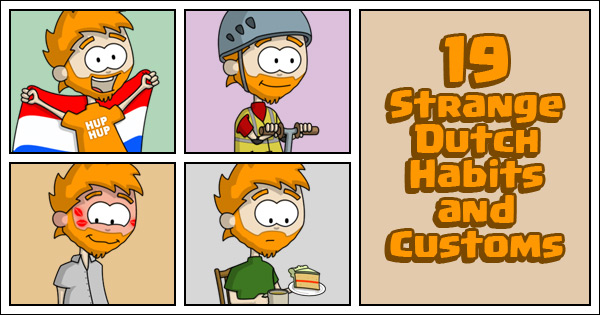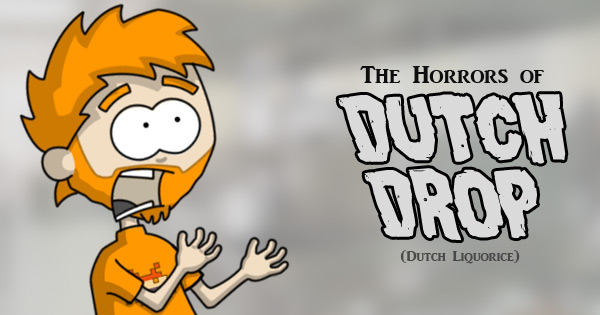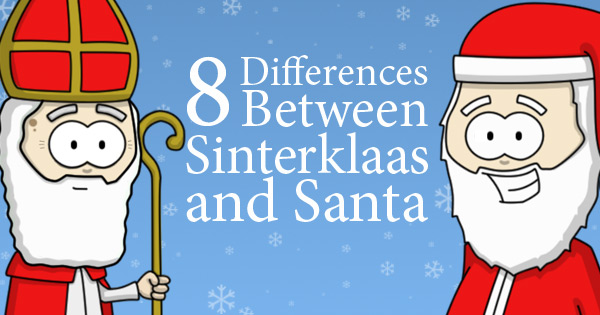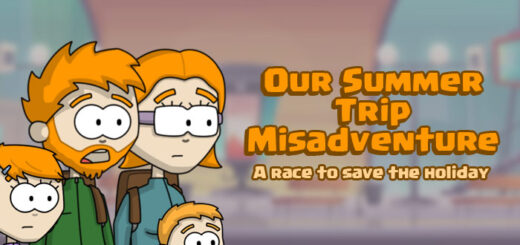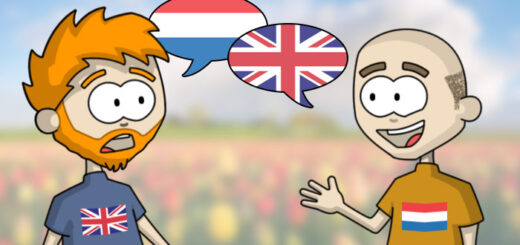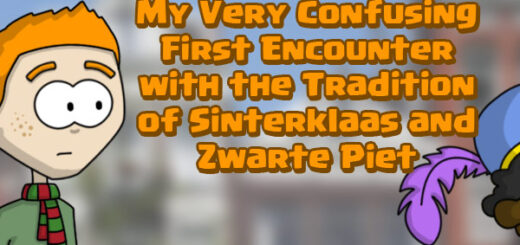My Very Confusing First Encounter with the Tradition of Sinterklaas and Zwarte Piet

As the end of November and 2001 approached I’d been in the Netherlands for around five months. Over that time I’d slowly started to understand some small parts of Dutch life but I still had a lot to learn. I was living in Haarlem, a city not too far from Amsterdam where I worked. It was the weekend and I was going for a stroll down the main shopping street.
It was getting cold and there was a festive vibe in the air. Christmas was fast approaching. It has always been my favorite time of year. Back in 2001 I’d not experienced a Dutch Christmas yet and I was starting to wonder what it would be like. I didn’t imagine that it would be too different from what I was familiar with in England: Father Christmas bringing gifts on Christmas eve, Christmas trees and Christmas stockings, the turkey Christmas dinner with Christmas crackers and paper hats. I imagined it would be much the same. Probably a slight variation on the same theme and traditions.
A Strange Encounter
While I strolled down the shopping street lost in my festive thoughts I started to become aware that something was going on. There was a strange buzz of excitement in the air, more so than the anticipation of Christmas. People seemed to be waiting around for something more immediate to happen. Small groups were forming along the sides of the street, most of them seemed to be parents with their children. As I continued walking the groups became larger until both sides of the street were lined with people.
As I walked down the center of the street, between the two halves, I started to wonder more and more what was going on. Then, suddenly and without warning, I got the answer.
From around a corner a short way ahead of me a large group of brightly dressed people suddenly entered the street. They were all walking, dancing, skipping and cart wheeling enthusiastically in my direction. Their approach was accompanied by the loud sound of children singing in Dutch. I had no idea what they were singing.
The other people, the ones who had come to watch, the ones who were lining the street (and blocking any escape into a nearby shop) started to cheer and clap and join in with the singing. Children sat on parent’s shoulders and waved. Smaller children sat in buggies. There were a lot of children and they all seemed very excited.
In my confusion I slowly started to take in more details of the approaching brightly dressed horde.
They were all dressed in what seemed to be brightly coloured renaissance jester outfits. There were yellows and purples and greens and every other bright colour of clothing imaginable. Each of them had a hat with a large feather coming out of it. Around their wrist and necks they were wearing large white frilly lace. The face of each one was painted black. Their lips were painted bright red. On their heads they wore afro wigs and a few had large hooped gold-earrings. I did not understand what I was seeing and it raised more than a few questions.
Suddenly they started reaching into the brown sacks they were carrying and throwing what looked like small biscuits to the excited children they passed.
It was at this point that I realized I was still standing in the middle of the street. With the parade almost on top of me I quickly side stepped into the crowd that had gathered to watch.
One of the renaissance jesters tried to hand me a handful of the mini-biscuits. I shook my head in confusion which simply made him pass them to the child of the family I suddenly realized I had backed up into.
The parade continued and they were soon gone (with some eager children following them for more of the mini biscuits). I had no idea what I had just witnessed. What had the parade been about? Why on earth had they all been wearing blackface? What had everyone been singing? And why was everyone going nuts over the mini-biscuits?
It was not until I retold the experience to my Dutch colleagues a few days later that I found out what it had all been about.
Discovering Sinterklaas and Zwarte Piet
The flamboyant renaissance jesters had been Zwarte Pieten (black Piets), the helpers of Sinterklaas who bring gifts for Children on December 5th and put them in their shoes. Until that moment I had never heard the name Zwarte Piet or Sinterklaas. Of course I made the mistake of saying, “Oh, so he’s the Dutch version of Santa.”
My Dutch colleagues did not like that. They were very quick to tell me that Santa (or the Kerst Man as he was known in the Netherlands, which literally translates to Christmas Man) had absolutely nothing to do with Sinterklaas. Both men might wear red, have long white beards and give gifts to good little girls and boys in December but they were nothing alike!
It turned out that there was a little more to their annoyance about my comparison. Because Santa is more well known around the world people automatically assume that Sinterklaas is a Dutch copy. However, Sinterklaas is not the Dutch version of Santa. Santa is the American version of Sinterklaas. Sinterklaas is the original and Santa (aka: Father Christmas) is the copy.
It was also ‘explained’ to me that Zwarte Piet was black because of the soot from going down the chimney. That one was a little harder to understand because how could chimney soot give someone an afro and big red lips? It’s not surprising that the subject of Zwarte Piet has always been highly controversial. However, in previous years more of an effort has been made to remove blackface from the tradition.
For me, my very first introduction to the tradition of Sinterklaas will always be that bizarre and confusing circus-like approaching horde of renaissance jesters in bright clothes and blackface, throwing mini-biscuits at cheering children.



